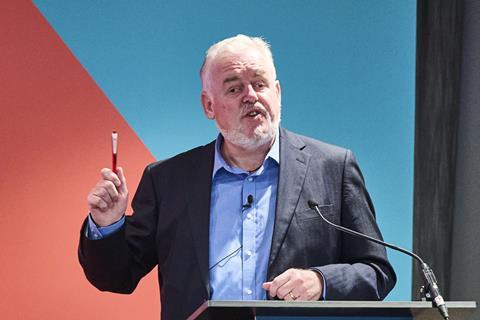Funds in the Local Government Pension Scheme (LGPS) face a challenge in the weeks and months ahead as triennial valuations could reveal significant surpluses – at a time when many councils are strapped for cash.
Speaking at the Pensions and Lifetime Savings Association’s (PLSA) Local Authority Conference last week, Garth Foster, an actuary in the Government Actuary’s Department, acknowledged that the current environment was challenging for pension funds when deciding how to handle surpluses.
“We are talking about very large sums of money, and they are fiscally significant to the whole of the government,” he said. “It is a really important issue.
“It is also a really challenging mix at the moment, with the challenges of tight fiscal conditions across government, but this more positive news from pension schemes.”
Foster said pension schemes should be guided by the principles of stability and prudence and be prepared to subject themselves to scrutiny.
“It’s really important to subject yourselves to scrutiny,” he said. “The reason for that is obviously because there are risks or adverse impacts on either side of the valuations.”
Government rethinking contribution rules for LGPS

The issue of surpluses in the LGPS came to the forefront earlier this year with a controversial decision by the Royal Borough of Kensington and Chelsea’s investment committee to reduce the employer contribution rate to zero for the 2025-26 financial year, against the advice of the fund’s actuary.
In March, the Ministry of Housing, Communities and Local Government wrote to LGPS administering authorities, warning them that contribution changes outside of a valuation cycle were only permitted if an employer’s liabilities changed or it became unable to meet its obligations to the pension fund.
However, the ministry also acknowledged a contradiction in LGPS rules and said it would consult on changes to how contribution rate changes are handled, as well as the role of the actuary in such decisions.
At the same time, many councils are facing serious funding difficulties.
A survey by the Local Government Association, published in October last year, reported that one in four local councils in England could be forced to apply for emergency government bailout agreements to avoid bankruptcy in the next two years.
In February this year, councillor Roger Phillips, chair of the LGPS Scheme Advisory Board, wrote to finance leaders at administering authorities urging them not to cut the budgets of their pension teams.
How Strathclyde has managed its funding surplus

Addressing the PLSA conference, Richard McIndoe, director of the £31bn Strathclyde Pension Fund, explained how the Scottish fund had handled its surplus.
The scheme had an estimated surplus of £9bn at its last valuation, equal to 147% of liabilities.
This surplus had risen to £14.3bn, or 182% of liabilities, as of 31 May 2025, according to council documents.
McIndoe said: “We decided on a compromise; we reduced contribution rates to 19.3% for a long-term sustainable rate.”
He said the fund then reduced the rate further, to 17.5%, following its 2023 valuation. It also took the opportunity to reduce its equity holdings to free up cash to pay pensions for the first year and part of the second.
McIndoe said: “Sometimes the best way to manage cashflow is just to have it sitting there. It may not be the most efficient way, but [with a surplus] you can afford a little bit of inefficiency.”
Earlier this year, Lothian Pension Fund chief executive officer David Vallery told Pensions Expert’s sister title LAPF Investments that it had taken a similar approach, cutting contributions while also reducing equity exposure.
Taking a measured approach
Rachel Wood, head of pensions at West Sussex County Council, told the PLSA conference that funds needed to adopt a measured approach. She said a pension fund’s role was not to hold on to an excess, nor to draw on it too quickly.
“Surplus for a long-term employer is a measure and a day-to-day tool,” she explained. “Surplus for shorter-term employers can be everything.
“It’s not for us, but it’s there to illustrate benefits that have been accrued, future benefits that will be accrued, and then those new members coming into the scheme.”
Wood added: “We need to avoid burning up a surplus. We have less opportunity to predict or model the impact of local government reorganisation changes, devolution, benefit changes, and asset pooling. All of these will need to be part of an iterative approach.”
The LGPS in England and Wales is currently working on formal actuarial valuations as of 31 March 2025. Scottish funds’ next valuation will be as of 31 March 2026.
The discussion on surplus comes as the government aims to relax rules around surplus release for private sector defined benefit pension schemes.























